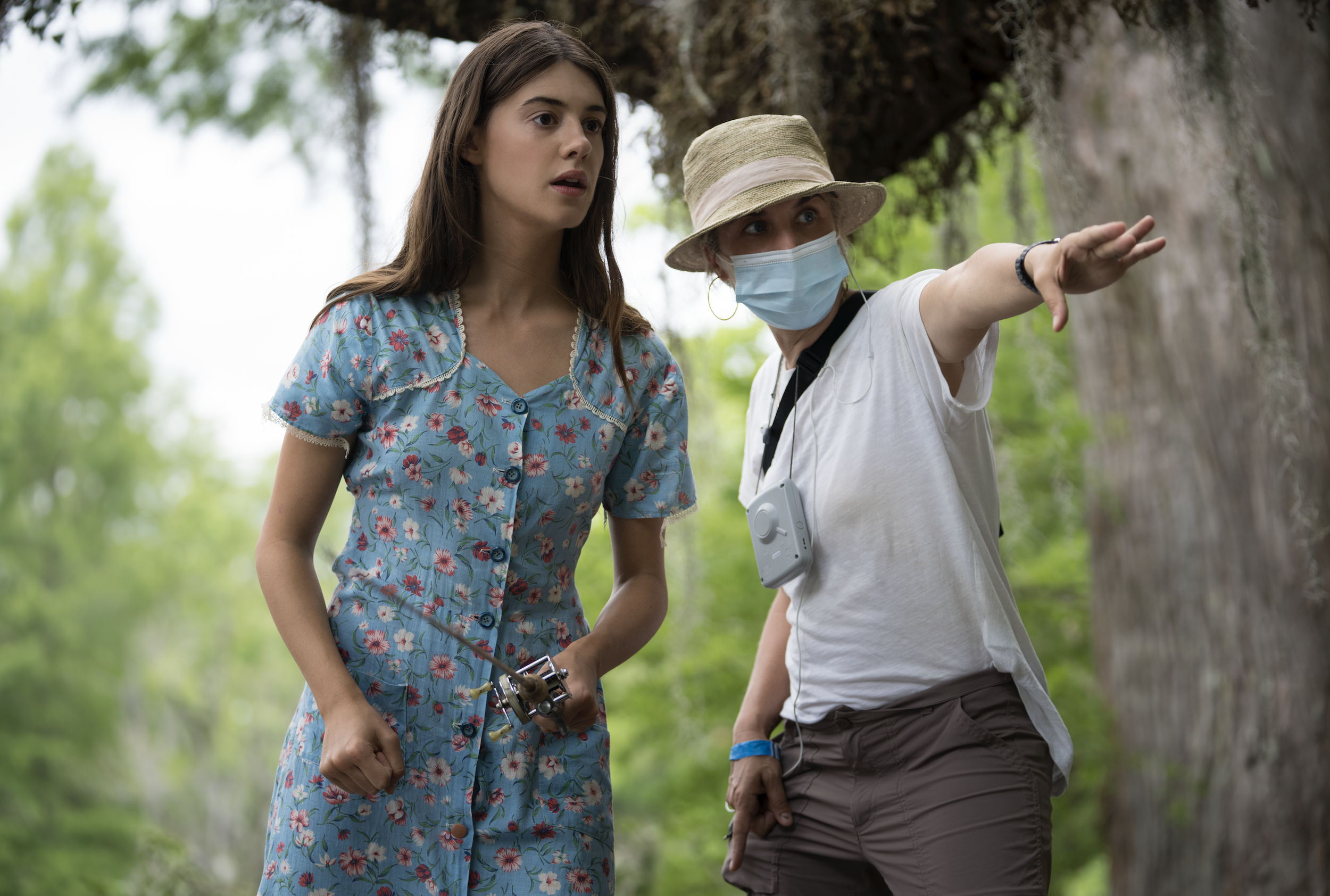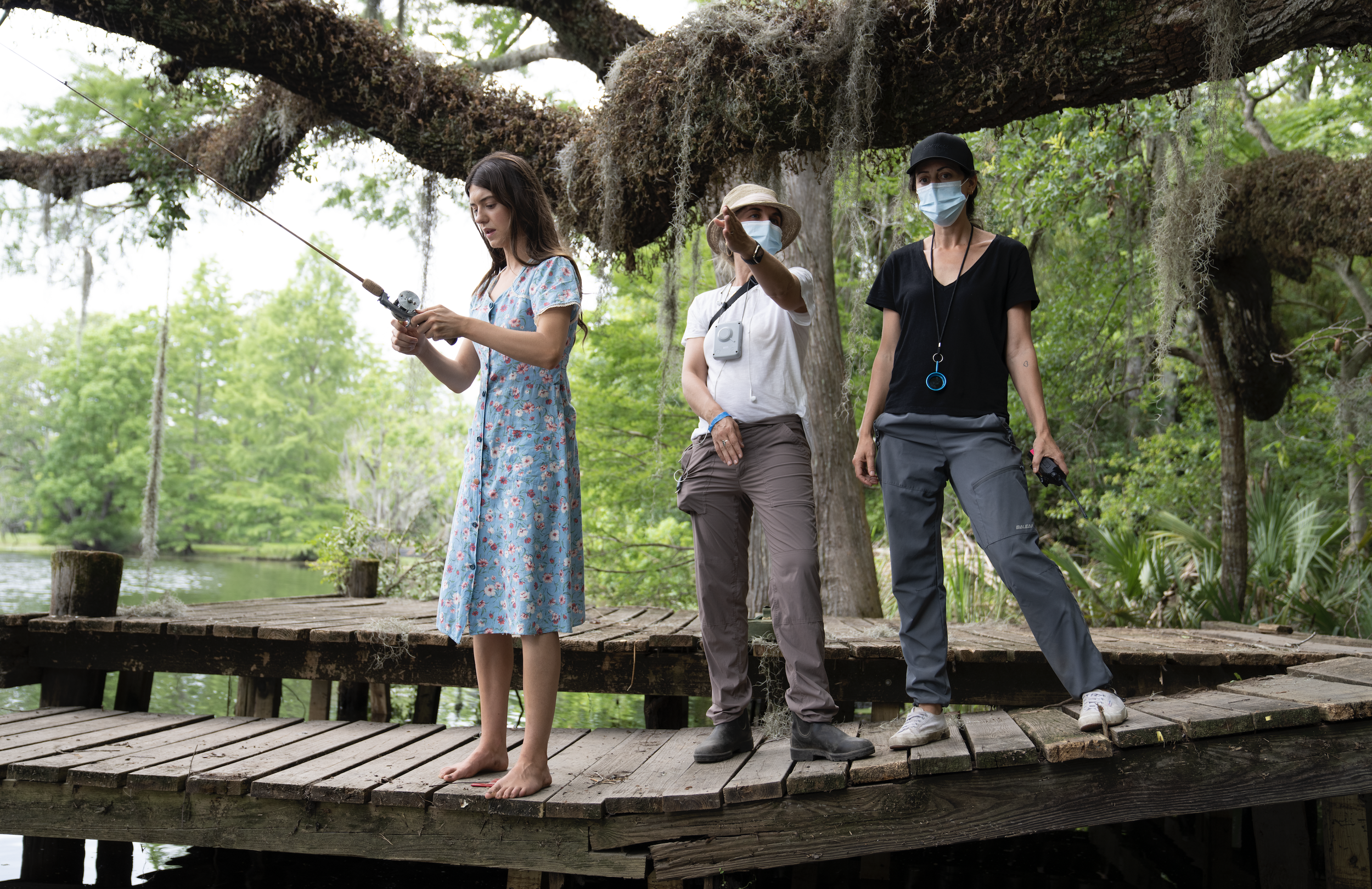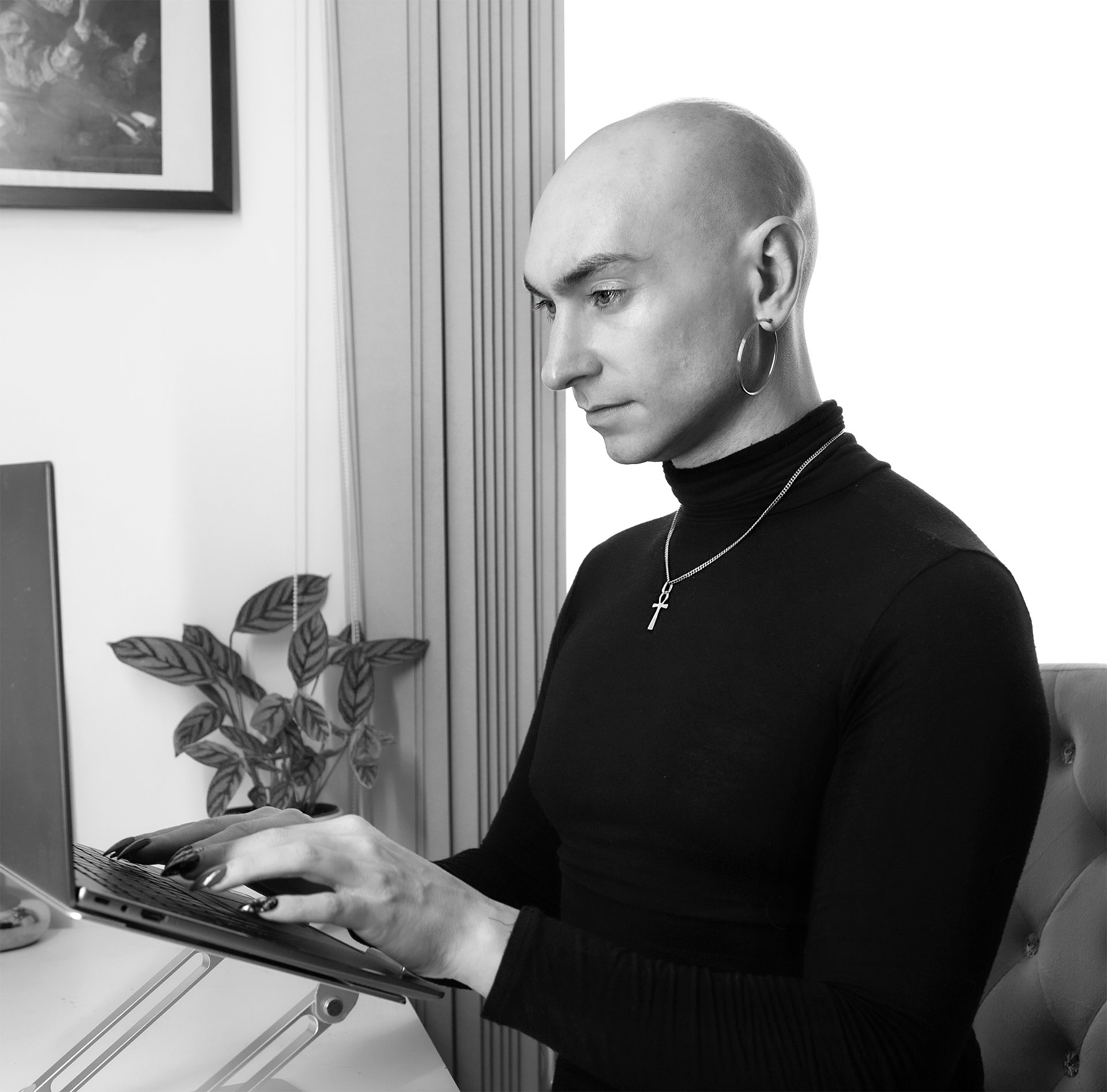An Interview with Director Olivia Newman
The director, Olivia Newman, talks to Cinegirl about transforming the best-selling novel by Delia Owens Where the Crawdads Sing into a feature film, produced by Reese Witherspoon’s production company Hello Sunshine.
F: What is your background and journey?
O: When I was a kid I did a lot of theatre. I actually went to college to study theatre and then when I was in college. I fell in love with film during a French cinema class. I am still an avid fan of Agnès Varda and Claire Denis from that time. And so I thought I would try to carve out a living by supporting other women and started working for a documentary distribution company called Women Make Movies, supporting female-identifying producers and directors from the onset.
F: You also write…
O: Yes. When I was working in distribution, I was still writing on the side. I was always writing screenplays and dreaming of directing my own films, but of course was nervous and conscious about supporting myself financially as an artist. My artistic soul was dying, so I just had to take the plunge and admit to myself that I wanted to pursue directing.
F: What next?
O: I ended up applying to graduate school for directing at Columbia University in New York. I also chose a very strong writing programme, to ensure that I was working on the craft of writing just as much as on the craft of directing. I graduated with a strong portfolio of short films and scripts, particularly Short Match (2010) written and directed by myself. This short film went on to be developed and made into a feature film in 2018 starring Elvira Emanuelle.
F: How has this journey been, as a woman?
O: I think every first feature is a miracle. It’s so grueling to get that first one; to get somebody to believe that it’s worth financing. I think it’s a struggle no matter what.
F: Transition from Short films to TV and Film?
O: I was really interested in Television, both as a way to make a living (because it is usually more consistent and lucrative work) and also as a way to keep working on my directing skills. When I was working on TV shows, I learned so many things: from how to film explosions to other technical challenges, and learning how to work with much bigger budgets than my first feature. It was an awesome opportunity. While I was directing TV, I was constantly still working on writing my own scripts on the side. When the pandemic hit, I was in the middle of prepping a television show in Chicago, when it was shut down and we didn’t know when we would return to filming. So in the downtime, my agent/manager kept sending me new material. I got sent a lot of really dark psychological thrillers, but what I really wanted a “good love story”. And then I was presented with Where The Crawdads Sing.
Daisy Jessica Edgar-Jones and Olivia Newman on set filming “Where The Crawdads Sing”.
F: Did you read the book?
O: Yes. I read the book in two days. I just couldn’t put it down. I loved Kaya’s voice, her resilience, the fortitude to keep going and how she is awkward, shy and insecure. Her voice was just so unique.
F: When a book is this beloved, is there a lot of pressure and responsibility of adapting it on screen? And did this affect your creativity?
O: Absolutely. When you read a book, you imagine a world in your head, and everyone imagines it differently. Everyone around making the movie all imagined different versions, but we also had to keep in mind that this story would reach many people. My guiding star was that I had a very specific experience reading the book and went on a really emotional journey with Kaya. I wanted to give the viewers the same emotional experience that I had when reading it - the same cathartic release. What does this mean? What is the message? This was my guiding principle in terms of adapting the story to the screen. The structure of the story was also very important, because the movie had to have an engine to keep the viewer guessing and wondering what would happen next.
F: The locations were amazing. Did you face any challenges?
O: The locations and weather were the biggest challenge. We felt it was really important that the audiences felt completely immersed in this land. Kaya’s world had to feel as remote and wild as possible. But we also had to use locations that the production teams could access. I really credit my production designer, Sue Chan. She found this perfect location in a state park, stacked up to the water edge and the cyprus trees. It took my breath away. If you looked to your left it was a wide open field, and if you looked to your right there was a big mansion. So we had to bring in trees to cover these sides and we built Kaya’s house under big oak trees and used the branches to fill in the gaps. It was really important to us that we build her house on location and not on a sound stage. Kaya had to be able to move freely, from exterior to interior, and bring the marsh into her house, so to speak. We wanted the audience to be able to see what she was seeing from her porch. We were shooting on an actual lagoon and had to shoot on rising tides. On our first day we learned the harsh lesson that when the tides were high, we couldn't even access Kaya’s house, because there was so much water. We decided to film in New Orleans in May, because that was supposed to be a dry month, but of course, there was unprecedented rain that year in May, so everyday the weather was a constant battle.
Daisy Jessica Edgar-Jones, Olivia Newman and Polly Morgan (BSC, ASC) on set filming “Where The Crawdads Sing”.
F: Tell us more about your relationship with Cinematographer, Polly Morgan?
O: Polly is an artist. She is an exquisite cinematographer. The majority of our problems were because the scenes took place outside, so we were fighting the weather and the natural daylight. Polly was so insistent on shooting with the right light or waiting for the clouds to filter the light in a specific way, or for the colours to change slightly so the light matched a previous scene. She has such a careful eye, and that is why the film is so consistently beautiful. From our very first meeting, we had almost identical lookbooks. We both love the work of Jane Campion and Terence Mallick and the way they film landscapes. We really shared the same sensibility. And then Mitch Dubin, the camera operator, just elevated every shot. When I described the kind of camera movement and how I wanted it to feel lyrical and ever-moving, Mitch would just add one extra move or add some small suggestions and it would look amazing.
F: As a working parent, when working on intense projects like this one, how do you manage your family-life?
O: I am so glad you said ‘parent’. I feel that women get asked this question a lot and men not as often. It affects all parents. We all feel responsible to make sure that our kids are well cared for and that we get to spend quality time with them. It’s really challenging to spend so much time away from your kids. It means that the other parent is taking care of them alone, or you are hiring help, or the kids are staying with relatives… It’s ever-changing and that is the hardest part. I was really lucky, because during the pandemic, I was able to take my family with me when I traveled, and the kids were doing online schooling. This was a rare opportunity and we were able to have this wonderful experience. At any other time, I would have been away for months and only visiting during weekends and holidays. Recently I worked on a television series and was on location for a month. That was the first time I had had to be away from my kids in a while, and I felt really homesick. I wish there was a way around it, for sure. I will say that on Hello Sunshine productions there are so many working parents, so there is a real conscious effort to protect family time, which I really appreciate.









